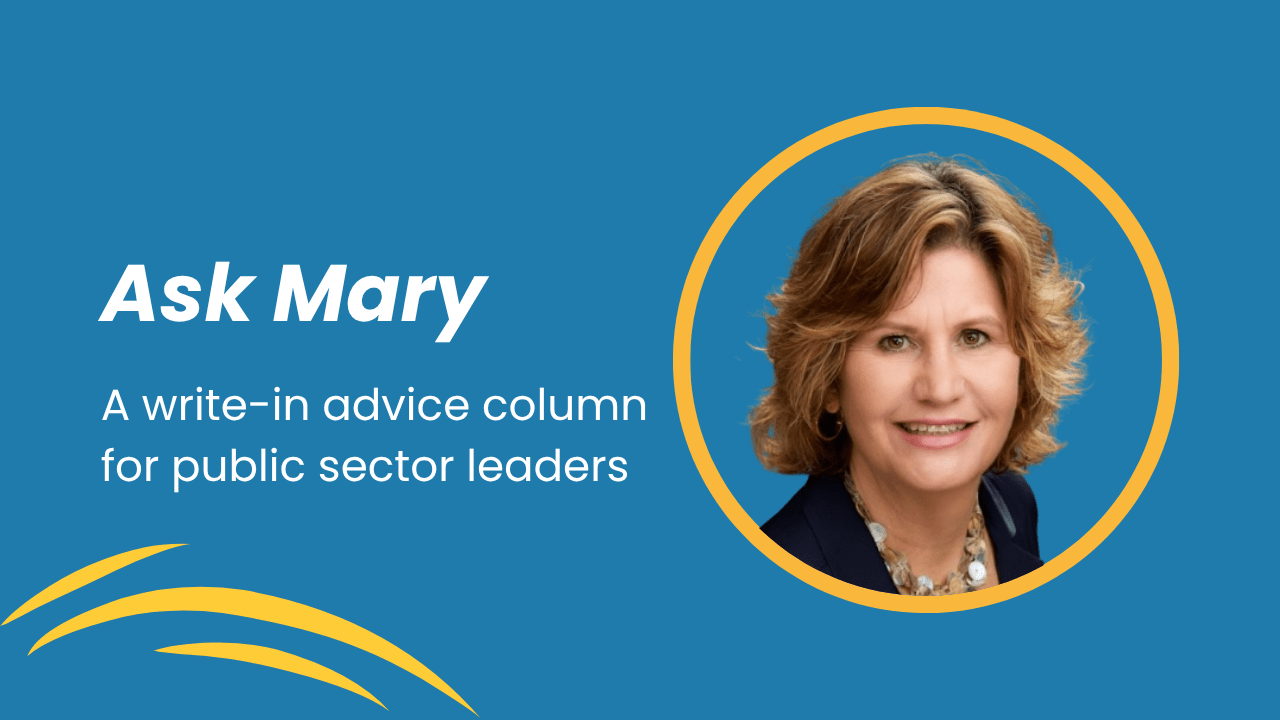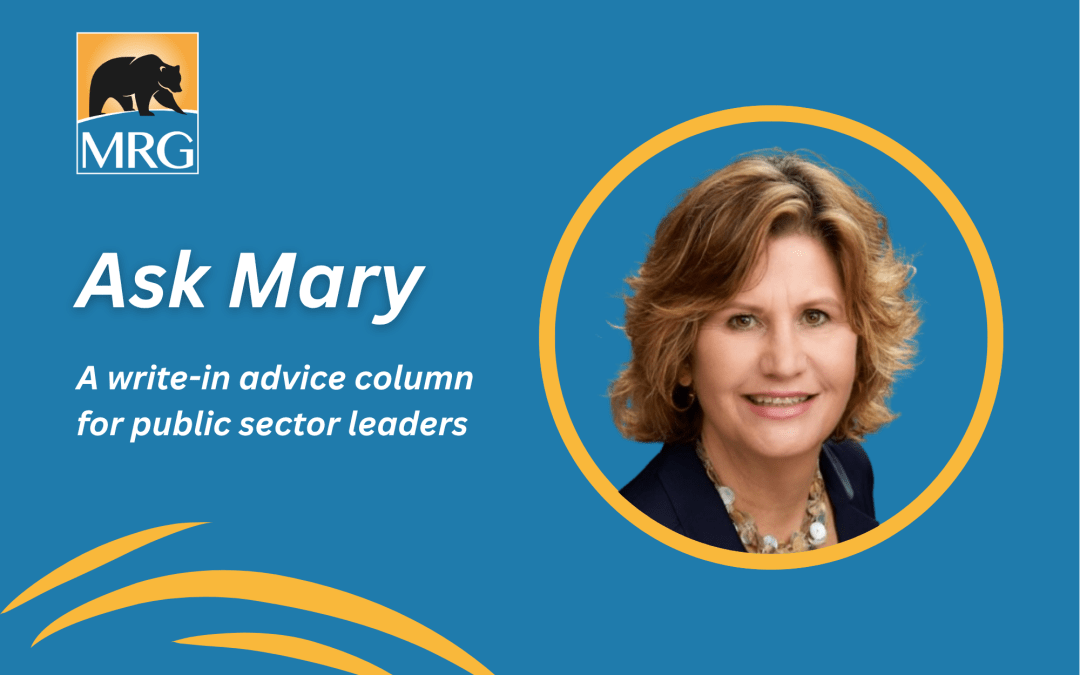
Welcome to Ask Mary, an advice column dedicated to helping public sector leaders address common issues and challenges with grace, humility and wit.
In this column, MRG founding partner and CEO Mary Egan offers her unique perspective and wisdom honed over two decades of helping public agencies thrive.
Dear Mary,
I’ve been assigned to a project with a few of my team members. I’m excited about the project but something is troubling me. My teammates seem unclear about the definitions of their role and commitment in the project. For example, two people have independently told me that they’re responsible for a key deliverable, but they’re not collaborating with each other. I think one (or both) of them is mistaken, and we don’t have time to waste on misunderstandings. At this point, it looks like our project could be delayed.
I feel like it’s important to establish equal contributions and clarify leadership responsibility. How can we get this project back on track without slowing things down?
Sincerely,
Out Of Alignment
*
Dear Out Of Alignment,
You’re absolutely right to address this issue quickly before your project is too far underway.
A lot of people come to me in my leadership training sessions with similar concerns, saying that they’re great as individual contributors but dread collaborative projects. I think this mentality may be a little bit “high school”. Group projects are a fact of life in the public sector, and people need to learn to work together effectively without duplicating work, slacking off, or stepping on each others’ toes.
Think of a team who’ve been assigned to dig a big hole. Everyone knows they should be digging, but are they digging a trench, or making a mountain? If the diggers don’t know the end goal and responsibilities before they start digging, then the end result will be a mess.
One of my preferred ways to address this challenge is to create a team charter. This is a short document that outlines the team’s purpose, objectives, roles, responsibilities, and timeline. The charter can serve as a road map for the team and can help everyone working on the project aligned on the scope and goals of the work. That way, everyone can know at a glance who is responsible for each part of the project, and can more easily collaborate and support each other.
A team charter typically will sit as an addendum to the primary project plan. Some teams find it useful to post the charter on the wall in a work area to ensure it is accessible at a glance. Some teams ask their project participants and stakeholders to sign the charter, ensuring that everyone has confirmed their understanding of the strategy and approach. This approach can be useful for major projects (like the merger of a special district into a city) as well as everyday collaborations.
Regardless of your approach, it’s essential to ensure that your teammates understand their project responsibilities as soon as possible, before the project starts to suffer. I’m confident that your project will be a great success.
Best,
Mary Egan
Mary’s Picks. You can find templates for a team charter online, or create your own with tools like Asana or Smartsheet.
Ask Mary is a write-in advice column for public sector professionals from MRG CEO and founding partner Mary Egan.
If you have a question for Mary, or if your agency has a challenge that MRG can help with, please reach out to info@solutions-mrg.com.

